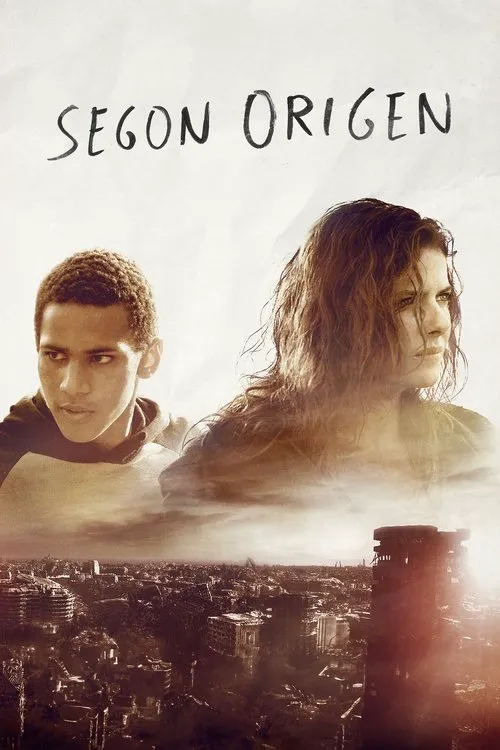Crafting a Silent Apocalypse: The Making of “Alba & Didac: Seeds of a New World”
In a cinematic landscape often dominated by explosive apocalypses and grand-scale battles for survival, “Alba & Didac: Seeds of a New World” steps forward with a profoundly different vision. This film, centered on the sole surviving children of a Silent Cataclysm, delves not into the spectacle of destruction, but the quiet, devastating aftermath and the indomitable spirit required to rebuild humanity from its very nascent beginnings. This behind-the-scenes look explores how the filmmakers brought such a delicate, yet immensely weighty, story to life.
The Director’s Vision: Embracing the Void
At its core, “Alba & Didac” is a poignant exploration of isolation, grief, and the flickering flame of hope. The creative team recognized early on that the true power of the narrative lay not in what was seen, but what was felt. The decision was made to lean heavily into the unsettling beauty of a world stripped bare, relying on evocative cinematography and immersive sound design rather than dialogue to convey the sheer magnitude of loss and the suffocating silence that has fallen upon the Earth.
The director’s mandate was clear: transport the audience into Alba and Didac’s desolate reality. This meant painstaking attention to environmental storytelling – every crumbled building, every dust-laden street, becomes a melancholic echo of what once was. The goal was to make the silent despair palpable and the smallest glimmers of hope shine through like rare stars.
Building a Devastated Landscape: Production Design Challenges
Creating a world that is both utterly destroyed and yet eerily beautiful was a monumental task for the production design team. Rather than relying heavily on CGI, the filmmakers sought out real-world locations that could truly convey the scale of abandonment. Deserted towns, industrial ruins, and vast, empty plains were scouted to serve as the authentic backdrop for Alba and Didac’s lonely existence.
The art direction focused on the textures of desolation: peeling paint, rusted metal, sand-blasted streets. The color palette was deliberately muted, reflecting the faded vibrancy of a world robbed of life, punctuated only by the occasional splash of color – perhaps a child’s toy, a remaining billboard, or the tender green of new life, symbolizing persistent hope.

Depicting a world ravaged and stark, where silence speaks volumes.
The challenges extended to portraying the remnants of civilization not as rubble, but as archeological sites where the last two humans attempt to piece together the narrative of their predecessors. This careful crafting allowed the devastated environments to become characters in themselves, witnesses to the dawn of a new, fragile beginning.
The Unwavering Core: Casting Alba and Didac
The success of “Alba & Didac: Seeds of a New World” hinges entirely on the performances of its two young leads. The casting process for Alba and Didac was exhaustive, demanding not just acting talent but an innate understanding of the film’s profound emotional core. The chosen actors needed to convey isolation, grief, and a developing sense of awe and responsibility, all with limited dialogue.
The director and casting director sought actors who could embody the resilience of youth, without sacrificing authentic vulnerability. The chemistry between the two young performers, particularly Alba (the emerging leader) and Didac (the innocent, perceptive sidekick), was paramount. Weeks of workshops were dedicated to building their bond and forging a connection that felt truly organic and deeply resonant on screen, showcasing their evolving friendship from initial hesitancy to profound interdependence. Their journey from pure survival to the beginnings of governance required nuanced performances that belied their tender years, making their struggles with decision-making and leadership feel authentic and heartbreaking.
The Symphony of Silence: Sound Design and Score
Perhaps one of the most critical, yet understated, elements of “Alba & Didac” is its sound design. In a world devoid of life, silence is not merely an absence of noise; it becomes an oppressive, palpable presence. The soundscape was meticulously crafted to highlight this emptiness – the gentle rustle of a lone breeze, the creak of an abandoned swing, the crunch of footsteps on parched earth. These sounds accentuate the vastness of their solitude and amplify every subtle shift in emotion.
The musical score, too, plays a crucial role. It is sparse and ethereal, designed to underscore the characters’ internal struggles and moments of connection without ever overwhelming the natural silence. The music acts as an empathetic bridge, guiding the audience through moments of profound sorrow and fleeting glimmers of hope, reflecting the resilience that slowly blossoms in Alba and Didac.
A Powerful Testament to Hope
“Alba & Didac: Seeds of a New World” is more than just a survival story; it’s a profound meditation on humanity’s enduring spirit, even at its most vulnerable. While exploring the devastation of a lost world and the crushing burden on two young shoulders, the film ultimately delivers a powerful message of hope.

Alba and Didac, the last hopes of humanity, forging a bond that transcends desolation.
The behind-the-scenes journey of bringing “Alba & Didac” to the screen was as challenging as the narrative itself, requiring a filmmaking team unafraid to explore stark themes with tender artistry. By focusing on the intimate human connection amidst monumental loss, the production crafted a film that resonates deeply, reminding us that even from the deepest ashes, hope can take root and a new world can begin.